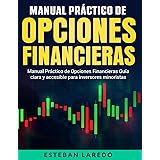Navigating the Digital Frontier: How Much Bitcoin Should You Own in 2025?
In today’s rapidly evolving financial landscape, the question isn’t whether to own Bitcoin, but rather, how much Bitcoin should you own? As highlighted in the accompanying video, we are witnessing a pivotal moment where traditional investment paradigms are being challenged, and a new digital asset class is taking center stage. This article delves deeper into the arguments for a substantial Bitcoin allocation, dissecting the risks inherent in conventional portfolios and exploring the future trajectory of the cryptocurrency ecosystem as we approach 2025.
For many, the journey into cryptocurrency began with modest allocations, perhaps a small percentage of a diversified portfolio. However, as the speaker in the video aptly points out, a mere 1% or 0.5% allocation, even if it doubles or goes up tenfold, might not be enough to significantly alter one’s financial trajectory. This underscores a critical shift in perspective: it’s not enough to simply be “right” about Bitcoin’s potential; one must possess the conviction to truly capitalize on what is being described as a generational opportunity.
The Cracks in Traditional Investments: Why Diversification Might Be Dilution
Before considering a proper Bitcoin allocation, it’s essential to understand the potential vulnerabilities within current investment strategies. Many investors still anchor their wealth in traditional assets like tech stocks, real estate, and bonds, often assuming their inherent stability. However, a closer look reveals a landscape fraught with increasing risk.
Tech Stocks and the S&P 500: Reaching for Fantasies
The tech sector has experienced an unprecedented bull run, leading to valuations that some argue are detached from reality. As the video articulates, many tech giants are now “reaching into ridiculous fantasies like AGI, quantum computing, nuclear reactors” to justify their soaring prices. This speculative fervor creates a precarious situation for investors. When the “bill for all of this is coming in,” those holding onto overvalued tech stocks could find themselves exposed to significant downside.
Even seasoned investors are signaling caution. In a notable move in 2024, Warren Buffett’s Berkshire Hathaway was a net seller of equities, offloading a staggering $133 billion worth of stocks and reducing its stake in Apple by over 50%. This action by a figure known for his conservative, value-investing approach serves as a stark warning about the potential overvaluation of the market. It suggests a strategic shift towards stockpiling cash, indicating a lack of attractive investment opportunities in the current stock market.
Real Estate: The Illiquid Piggy Bank
Historically, real estate has been a cornerstone of wealth for generations, particularly baby boomers. Yet, the current environment presents a different picture. The speaker vividly describes the challenges: escalating home insurance costs, skyrocketing HOA fees, and the increasing frequency of natural disasters from the Lahaina fires in Hawaii to hurricanes in Florida. These factors erode profitability and turn homeownership into a financial drain.
The core issue is that homeowners are often forced to absorb the “inflation and debt of a nation by forcible payments of maintenance, HOAs, contractors, insurance supplies, materials, taxes.” This turns homeowners into the “buyer of last resort,” their property becoming an illiquid piggy bank for external demands. Furthermore, the return on investment for many homes has dwindled to a mere “1 or 2% a year” before factoring in the ceaseless maintenance and property taxes, often leading to a near-zero net return. The housing market has essentially “froze” since interest rates shot up, leaving many homeowners “sidelined” and unable to free up capital to invest in emerging opportunities like Bitcoin, even if they desired to.
The Crypto Landscape: A Clearer Path Emerges Beyond Altcoins
Within the cryptocurrency space itself, the notion of broad diversification into a basket of altcoins is also being questioned. While variety can seem prudent, it can actually dilute exposure to the most robust asset and introduce unnecessary risks. The video specifically examines the evolving roles of Ethereum and Solana.
Ethereum and the Rise of Layer 2s: A Shifting Core
Ethereum, once seen as Bitcoin’s primary competitor or complement, faces its own set of challenges. The proliferation of Layer 2 (L2) solutions like Base and Arbitrum is rapidly shifting the center of gravity away from the Ethereum mainnet. These L2s are now handling “five times the transaction volume of Ethereum mainnet” and boast “10 million active addresses” compared to just “2 million on mainnet.” The economics are clear: L2s offer lower gas fees, higher transaction throughput, and consequently, higher potential yields, making it increasingly illogical to provide liquidity on the mainnet.
The prediction is stark: the Total Value Locked (TVL) on Ethereum mainnet could eventually trend towards zero. Ethereum’s future role may be reduced to a “bare-bones shell for L2s to write data back onto.” Adding to this abstraction, innovations like Coinbase Smart Wallet and Rabby Wallet are eliminating or simplifying gas fees, making the underlying complexities of Ethereum increasingly invisible to the mainstream user. By the end of this year, it’s conceivable that many users will interact with crypto without even realizing Ethereum is the foundational layer.
Solana: A Niche, Not the Standard
While Solana has enjoyed a surge of activity, largely fueled by meme coins and platforms like pump.fun, its long-term viability as a foundational layer faces hurdles. The industry, as observed, appears to be converging on the Ethereum Virtual Machine (EVM) as the de facto standard. Solana’s incompatibility with EVM might leave it “too isolated on its own,” struggling to compete with corporate-funded blockchains that are deeply integrating with the EVM ecosystem.
The On-Chain Internet: EVM, Superchains, and Corporate Giants
The year 2025 is poised to usher in a new era: the “on-chain internet,” where the wallet becomes the new browser, and L2 blockchains, particularly those built on the Optimism Superchain, form the new digital backbone. This vision involves hundreds, even thousands, of interoperable yet independent L2 blockchains, each catering to specific needs and ecosystems.
Major players are already investing heavily in this future. Giants like Coinbase are building Base, their own robust ecosystem for commerce, gaming, art, and digital assets. Kraken is following suit with the Ink blockchain, also on the Optimism Superchain. Uniswap and Sony are also carving out their pieces of this pie, potentially migrating their liquidity onto new chains. This move by large corporations signifies a fundamental belief in the modular, scalable architecture provided by L2s.
Companies prioritize control, performance, and uptime for their users. Unlike standalone blockchains that might experience outages, corporate-backed L2s can guarantee these critical requirements. The strategic importance of developing proprietary wallets is also paramount, as they serve as the user interface for this new internet. The Optimism Superchain ecosystem already accounts for “50% of all L2 transactions,” indicating its rapid ascendancy as the preferred platform for building this next generation of the internet.
Rethinking Optimal Bitcoin Allocation: Beyond 1%
Given the shifting sands of traditional finance and the evolving crypto landscape, the central question of “how much Bitcoin” becomes even more critical. BlackRock’s varying recommendations from “1 to 2% Bitcoin exposure” (a recent conservative estimate) to a more aggressive “84.9% optimal BTC allocation” (from a report two years prior) highlight the wide spectrum of opinion. While Bitcoin maximalists advocate for 100%, a more nuanced approach involves understanding the power of conviction and, surprisingly, leverage.
The Power of Leverage: Learning from Real Estate
The speaker presents a thought-provoking parallel: real estate. Many individuals take out substantial mortgages, essentially leveraging their assets 5x or even 7x, to acquire homes. This leverage, rather than mere price appreciation, is often the primary driver of wealth creation in real estate. A standard 30-year mortgage, where 25% of one’s salary is allocated to housing, translates to roughly 7x one’s salary in asset value. In net worth terms, accounting for emergency savings, this equates to a “4 to 7x leverage” that is considered normal for real estate.
Applying this logic to Bitcoin, if it’s viewed as a generational store of value comparable to real estate, an optimal allocation, if leverage were safely accessible, could be closer to “5x” or a “500% portfolio allocation.” However, the extreme volatility of Bitcoin makes such high leverage incredibly risky for individual investors, often leading to liquidation. Therefore, while “1x leverage” (100% portfolio allocation) might be a more realistic and reasonable target for most, the conceptual argument for higher allocations through leverage remains compelling, particularly for institutional players like MicroStrategy who can access unliquidatable, cheap institutional margin.
Bitcoin’s Unwavering Fundamentals for 2025 and Beyond
Despite the challenges of obtaining high leverage, Bitcoin’s fundamentals are stronger than ever. The global recognition of Bitcoin as an “unfollowable, unhackable, unchained technology” continues to grow. Key indicators reinforce its strength:
- All-Time High Hash Rate: Demonstrates the network’s increasing security and resilience.
- ETFs and Options Markets: The introduction of Bitcoin ETFs has opened the floodgates for institutional capital, while options markets provide price stabilization.
- Political Landscape: The mention of “2025 is year one with the first pro-Bitcoin president coming into office” hints at a potentially favorable regulatory environment.
- Price Discovery Mode: Having broken all-time highs, Bitcoin is in uncharted territory, suggesting significant growth potential without previous resistance levels.
Acquiring and holding Bitcoin demands “unwavering conviction.” It’s not a short-term gamble but a “four-plus year time horizon” play that requires resisting the urge to day trade or seek shortcuts. The challenge is to avoid getting lost in the “hall of mirrors” of the broader crypto market and to maintain a straightforward focus on the primary asset. The amount of Bitcoin you can acquire today may very well be the most you will ever own, making conviction and a clear understanding of optimal Bitcoin allocation paramount for navigating this generational wealth opportunity.







